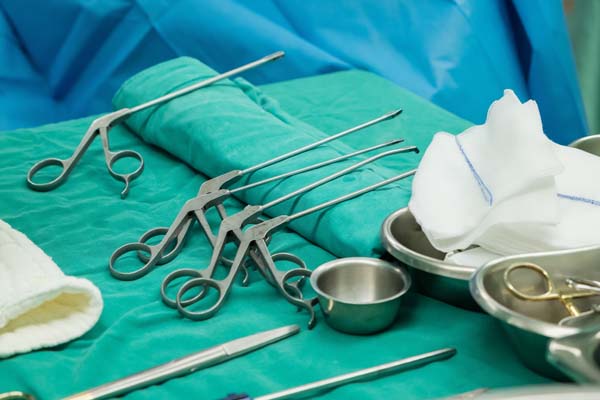How a Physical Therapist Can Help After ACL Reconstruction

Physical therapy is crucial to healing after the anterior cruciate ligament, or “ACL,” sustains an injury and requires surgery. The combined goal of ACL reconstruction surgery and physical therapy is to restore the knee’s mobility, strength, and endurance. This makes them critical for injured athletes, a common demographic for ACL tears and injuries. This article will cover what physical therapy will look like after ACL reconstruction and how it can help expedite recovery.
Why work with a physical therapist?
Without physical therapy, healing after surgery will take longer because the patient is not working to strengthen or retrain the limb or joint. This also leads to a weaker, less mobile limb or joint. However, with a physical therapy plan of care, or “PT plan of care,” recovery is put in the patient’s hands.
After ACL reconstruction, the patient can work on strengthening the knee and restoring its full range of motion, or “ROM.” This can also help prevent re-injury. In addition, athletes must complete exercises and stretches at home to help them safely return to their sport. Another benefit of physical therapy after surgery is how it may reduce pain and swelling as the torn ACL heals.
PT plan of care after ACL reconstruction
Physical therapy will look different at various stages of recovery. This is because the PT plan of care will change as the injury heals, making it more personalized and, therefore, more effective. Here is an overview of the primary phases of physical therapy after ACL reconstruction.
Early postoperative physical therapy
Immediately after ACL reconstruction surgery, the PT plan of care will focus on restoring mobility in the joint, thereby making it functional again. The patient will need to walk with crutches for a specific time. First, a physical therapist will help the patient learn to do so safely. PT exercises will come in the form of gentle exercises that promote mobility without putting weight on the knee. Typically, such exercises target muscles around the knee and throughout the leg. However, patients must complete these exercises lying on their stomach or back.
Intermediate exercises
After a week or so, the physical therapist will introduce exercises to help the patient ditch their crutches. This gradual process limits pain and swelling while avoiding another injury to the ACL. At this point, the PT plan of care will include exercises that target the hamstrings and quads (the front thigh muscles). Balance exercises will also come into play.
On average, patients are able to walk without support around the three-week mark following ACL reconstruction surgery. After that, the physical therapist will work on further improving the range of motion in the hip and knee. Leg exercises will continue and may start to include light weight-bearing exercises.
Advanced exercises: Finishing physical therapy
Although the patient can walk at this point, the physical therapist will continue to help strengthen the knee. Squats, lunges, and leg raises are standard. Balance-focused and sports-specific exercises may also be recommended. For example, the physical therapist may ask the patient to make sudden stops, turns, or changes in direction while walking, then jogging, and so on.
Get on track for a faster recovery
If you have torn your ACL and will be going into surgery or have already received ACL reconstruction surgery, physical therapy can help. To consult a physical therapist, call our office today. Our goal is to help each patient get back to their life as soon as possible.
Request an appointment here: https://ocptclinic.com or call Orange County Physical Therapy OCPT at (949) 299-0297 for an appointment in our Newport Beach office.
Check out what others are saying about our services on Yelp: ACL Reconstruction in Newport Beach, CA.
Related Posts
Massage therapy is widely known for its therapeutic benefits, particularly when administered by an experienced physical therapist. Physical therapists have a unique understanding of musculoskeletal anatomy and movement and can utilize massage therapy to help patients recover. This approach, also known as physical therapy massage, reduces pain and improves overall physical health.According to the National…
Cycling performance therapy can be an important resource for athletes seeking to improve efficiency, prevent injuries, and recover from physical strain. This specialized approach, provided by a physical therapist, addresses the unique biomechanical demands of cycling while promoting long-term musculoskeletal health. Cycling performance therapy is a targeted program designed to improve a cyclist's endurance, strength, and…
Physiotherapy is a medical term that refers to physical therapy. Many individuals are familiar with physical therapy due to the common need for it among sports players and individuals who may have gotten injured or experienced a chronic illness.There is also a common misconception that physiotherapy is only needed when it comes to rehabilitating a…
Hip pain can be a debilitating condition that affects your daily activities and overall quality of life. Seeking hip pain treatment from a physical therapist when it first appears can prevent further complications and improve your health and well-being. Here are four main benefits of early hip pain treatment.Early hip pain treatment can prevent further…
